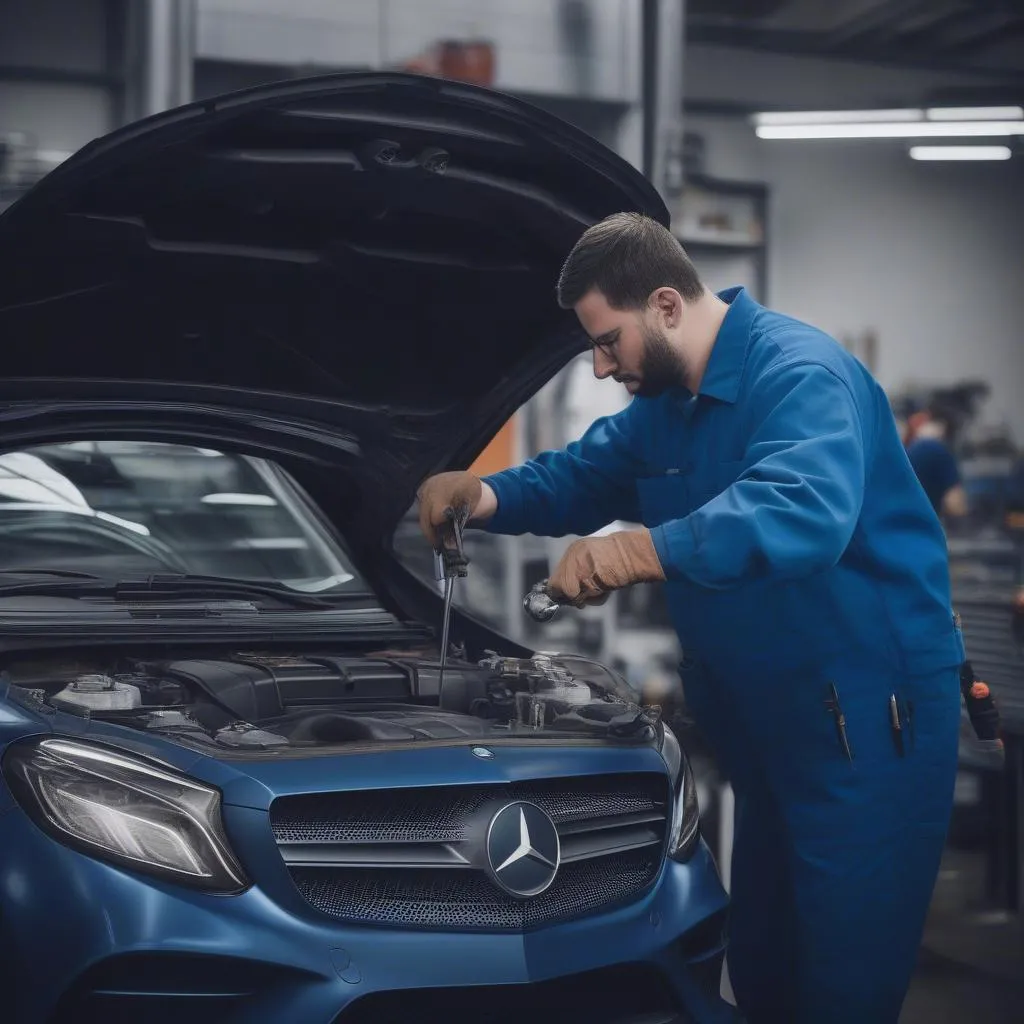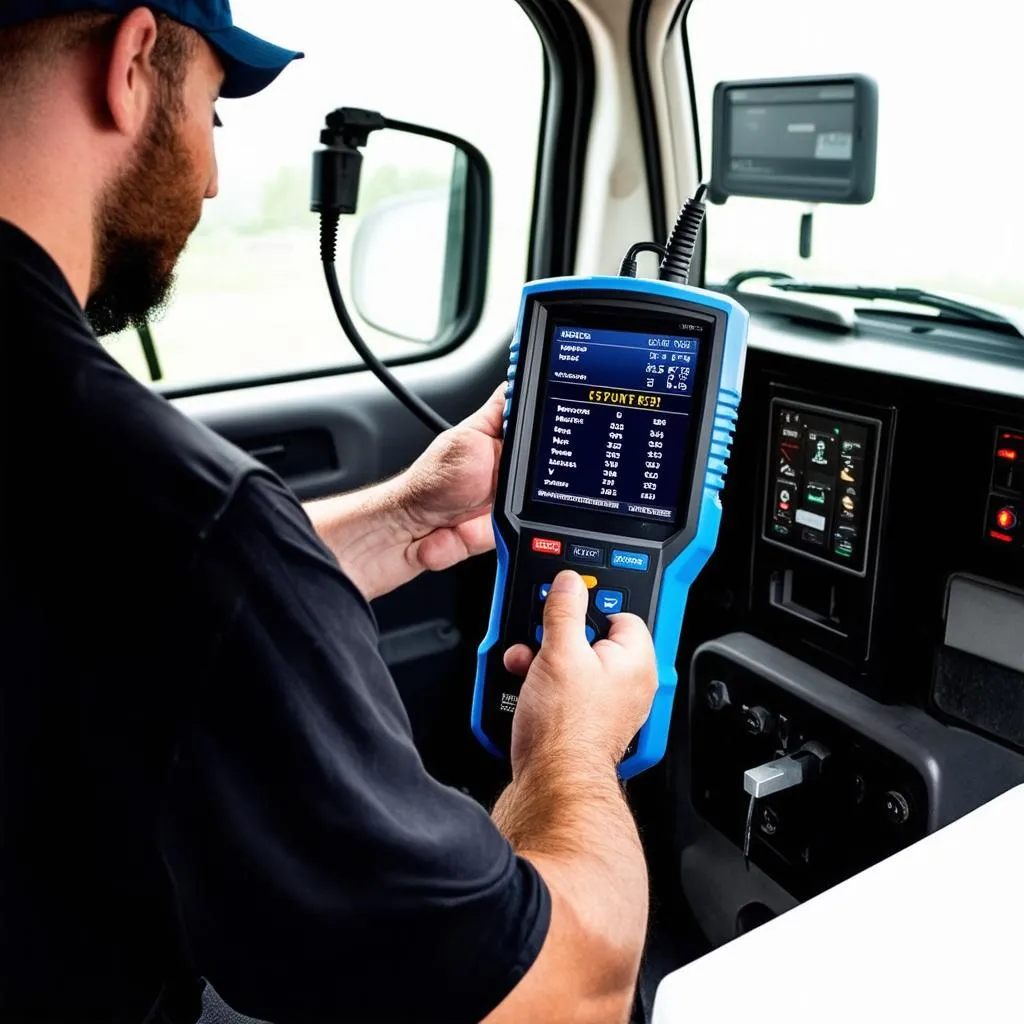Experiencing air conditioning problems with your 1997 Mercedes Benz E420? Don’t sweat it! Understanding your car’s diagnostic trouble codes (DTCs) is the first step to getting cool air flowing again. This guide will break down everything you need to know about 1997 Mercedes Benz E420 AC diagnostic codes, common issues, and how to troubleshoot them.
Understanding Your E420’s AC System
Before we dive into the codes, let’s review the basics of your car’s AC system. It operates on a closed loop system that utilizes refrigerant to cool and dehumidify the air. Key components include:
- Compressor: Pumps the refrigerant throughout the system.
- Condenser: Cools and condenses the refrigerant from a gas to a liquid.
- Evaporator: Absorbs heat from the cabin air, cooling it down.
- Expansion Valve: Regulates refrigerant flow.
When any of these components malfunction, your AC system’s performance can be significantly impacted.
Common 1997 Mercedes Benz E420 AC Diagnostic Codes
Unlike modern vehicles with OBD-II systems, the 1997 E420 requires a specialized scanner to retrieve AC diagnostic codes. These codes are often proprietary to Mercedes-Benz. Here are some common issues and their associated codes (Note: These are for illustrative purposes and may not directly correspond to specific Mercedes codes):
- Code Example 1: Refrigerant Pressure Sensor Failure – This could indicate low refrigerant levels due to a leak or a faulty sensor.
- Code Example 2: Blower Motor Circuit Malfunction – This could mean a problem with the blower motor itself, the blower motor resistor, or related wiring.
- Code Example 3: Sun Sensor Malfunction – The sun sensor plays a role in automatic climate control. A malfunction can disrupt temperature regulation.
Expert Insight: “Accurate diagnosis is key to efficient AC repair,” says automotive electrical expert, Dr. James O’Connell, author of “Automotive Electrical Systems Demystified.” “Using the right diagnostic tools and understanding the codes can save you time and money.”
Troubleshooting Your AC Issues
- Check the Basics: Before assuming the worst, ensure your AC controls are functioning correctly and the system is charged with enough refrigerant.
- Visual Inspection: Inspect the AC components for visible damage, loose connections, or leaks. Pay close attention to the compressor belt and wiring harnesses.
- Diagnostic Scanning: If the basic checks don’t reveal the problem, it’s crucial to connect a Mercedes-Benz compatible scanner to retrieve the specific diagnostic codes.
- Consult a Professional: While some AC issues can be addressed by experienced DIYers, it’s generally recommended to consult a qualified Mercedes-Benz technician for accurate diagnosis and repair.
FAQs about 1997 Mercedes E420 AC Problems
Q: My AC blows only warm air. What could be wrong?
A: This often signals low refrigerant levels, a malfunctioning compressor, or a problem with the expansion valve.
Q: Why does my AC work intermittently?
A: Intermittent issues could be due to a faulty pressure switch, electrical gremlins, or even a failing blower motor.
Q: How often should I recharge my AC system?
A: A properly sealed system shouldn’t require frequent recharges. If you’re experiencing recurring low refrigerant issues, there’s likely a leak that needs to be addressed.
 Mercedes E420 Engine Bay
Mercedes E420 Engine Bay
Don’t Let AC Troubles Ruin Your Drive
Remember, a properly functioning AC system is essential for a comfortable and enjoyable driving experience, especially during warmer months. By understanding the 1997 Mercedes-Benz E420 AC diagnostic codes and common troubleshooting steps, you can address issues effectively and get back on the road in comfort.
 Mechanic Diagnosing Car AC
Mechanic Diagnosing Car AC
Need more help with your car diagnostics? Visit CARDIAGTECH for resources, tools, and expert advice.
Disclaimer: This information is for general knowledge and should not replace professional automotive advice. Always consult a qualified technician for diagnosis and repair.


